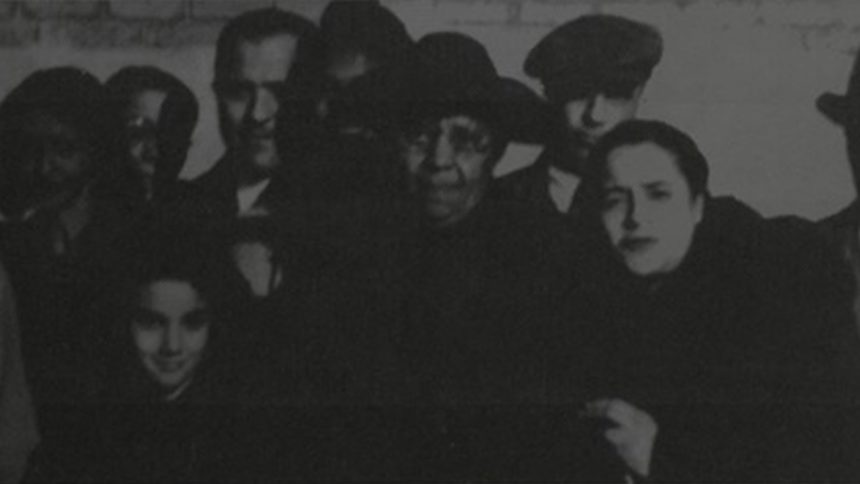Almost exactly 75 years ago, on October 30, 1843, a Seventh-day Adventist lady by the name of Lucy Byard, passed away in Freedman’s Hospital in Washington D.C. Though few-if any realized it at that time-the death of Lucy Byard would serve as the catalyst for the birth of Regional Conferences.
In short-here is the story:
Lucy Byard was a 66 year old Black Seventh-day Adventist living in Long Island, New York. She was afflicted with liver cancer. With that liver cancer came a disease called “cachexia”.
It was her desire to be treated at an Adventist facility, so she and her husband-according to the account provided by Dr. Calvin B. Rock, in his excellent book, “Protest and Progress: Black Seventh-day Adventist Leadership and the Push for Parity”-asked Elder Jeter Cox, the Pastor of the Bethel SDA Church in Brooklyn to write a letter of introduction to Washington Sanitarium. The hospital apparently responded positively to the letter and Mrs. Byard was admitted.
But here is where things get interesting: Washington Sanitarium apparently did not admit black patients at that time-except for rare cases where they admitted blacks ”to an isolated section of the facility to be treated by the physicians during off-hours”. They apparently assumed that Elder Cox-who was a black Seventh-day Adventist Pastor-was not black, and therefore, Mrs. Byard was not black either.
However, once it was discovered that Mrs. Byard was black, she was “un-admitted” to the hospital. According to her husband’s account of the story in Dr. Rock’s book, he was told that “it was against the law in the State of Maryland to admit colored people into the Sanitarium” (my italics). In other words, not only were Adventists telling this black Adventist woman that she could not get into this Adventist hospital, but the State of Maryland was telling her that as well. Such was life for black people in those days.
It was arranged for Mrs. Byard to be transferred to Freedman’s Hospital in Washington. One of the Adventist myths that arose out of the story was that Mrs. Byard died on the way to Freedman’s Hospital (one version of the story that was told back in the day when I was growing up was that she died in the hospital hallway. Neither version is true-though I did not know that until I read Dr. Rock’s book. I suppose the good thing is that even though the people who told me the story of Lucy Byard may have gotten some details wrong, at least, they told me the story. I am not sure that we are doing that today). Mrs. Byard actually died three weeks later.
But though the stories surrounding Mrs. Byard’s death were not always real, the rage in the black Adventist community over what happened to Mrs. Byard was very real (imagine what would have happened if they had social media in those days!). And in what may well be a good lesson for today, those Adventists did not just get mad, they did something. And…in what could be another lesson, those Seventh-day Adventists did not leave the church; they changed the church. That tragic, inexcusable event was the catalyst for Regional Conferences.
Less than six months after Mrs. Byard died, the General Conference reversed its (subtle-but very real) opposition to Regional Conferences and at its Spring Meeting on April 10, 1944, voted to adopt the recommendation from a special committee that had been authorized to study mission in what was called the “colored work”, that unions could authorize the formation of “colored conferences”. And that these “colored conferences” be administered by “colored officers and committees” (that was not insignificant, in that the first several Presidents of Oakwood and the first Directors of the General Conference’s Negro Department-the person who was responsible for leading and directing the black work in those days-were white).
Five months after that, the first Regional Conference-the Lake Region Conference-was established, followed in quick succession in that same year by the Northeastern Conference and the Allegheny Conference (later divided into Allegheny East and Allegheny West). Within approximately one year of Lucy Byard’s death, three Regional Conferences were formed. Today, two of those conferences-Northeastern and Allegheny East-are two of the ten largest conferences in terms of tithe in the entire North American Division.
This very bad thing that happened to Lucy Byard was used by God to do a very good thing: Start Regional Conferences.
There are a number of lessons that I believe can be learned from that; I’ll save that for Part II. For now, I hope that we celebrate Mrs. Lucy Byard and not allow the memory of her, what happened to her and how God used what happened to her to be a good thing for us-therefore, I hope that none of those things will be lost. What happened to Lucy Byard almost exactly 75 years wound up giving black people their own structure, led by their own people, to reach their own people (but not just their own people).
And though it might be easy to take that structure for granted, the story of Lucy Byard reminds us that a lot of people went through a lot of things so that we might have what we have today. And what we have today-Regional Conferences-are needed as much today as they were in Lucy Byard’s day. What has been given to us must be preserved by us. And if that doesn’t happen-if Regional Conferences come to an end, if they die on us-it will be solely the responsibility of us.
By Elder Edmond

